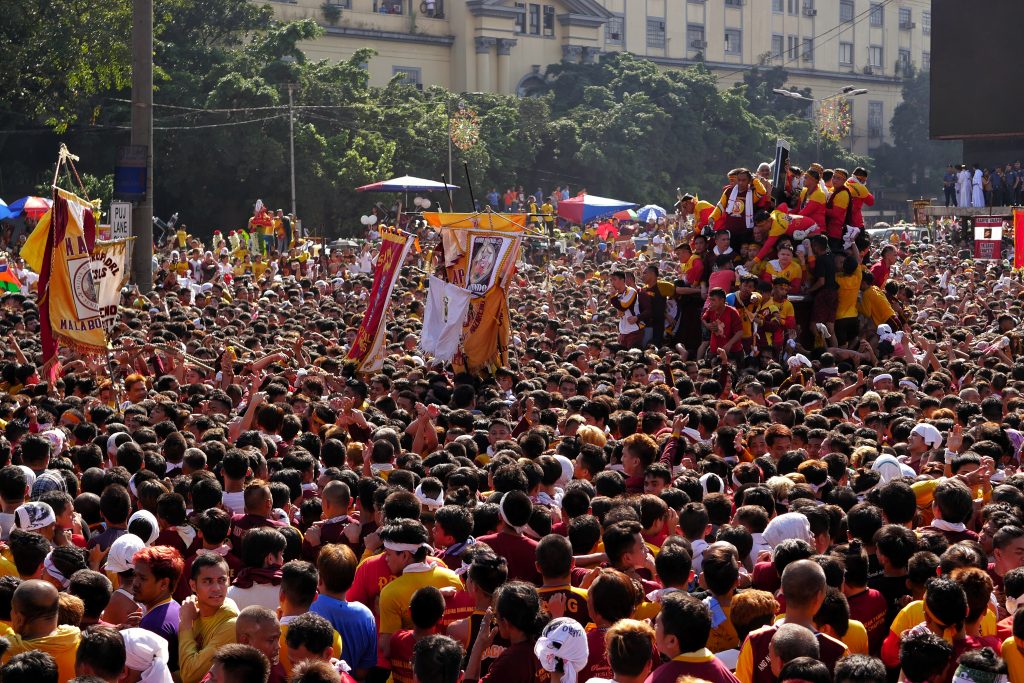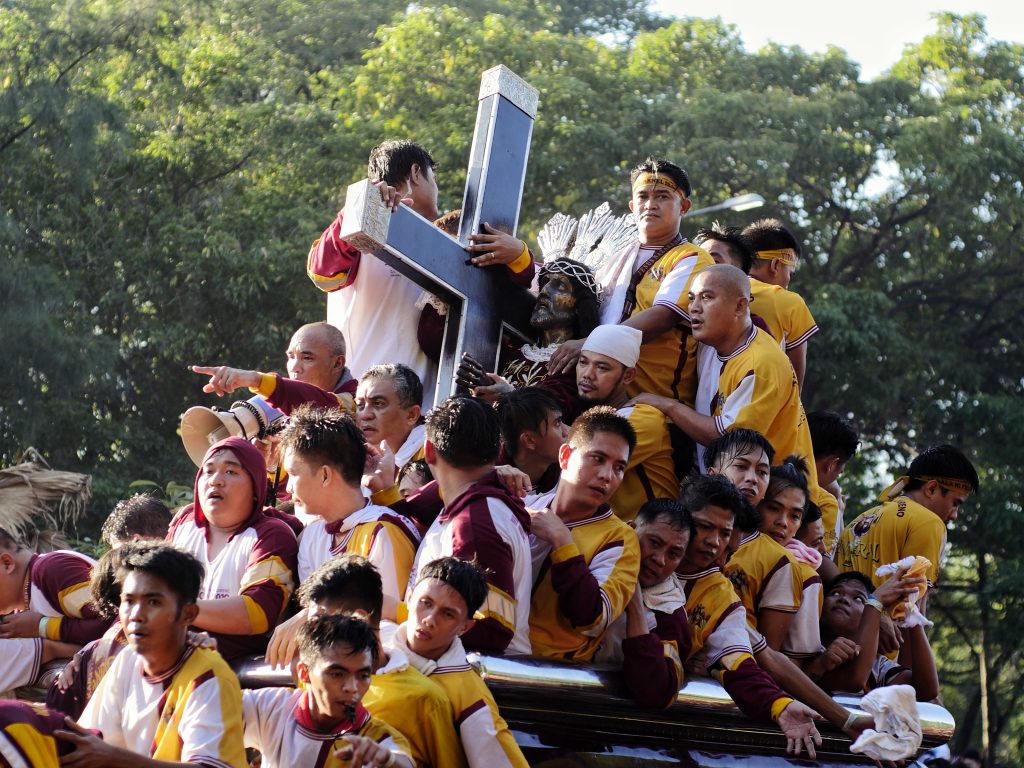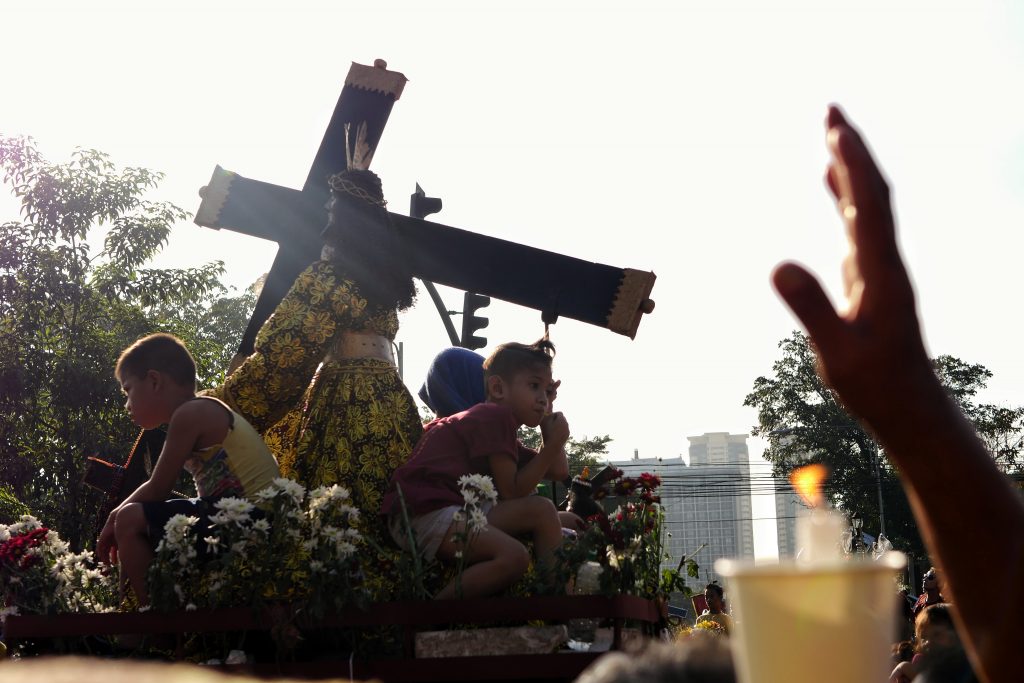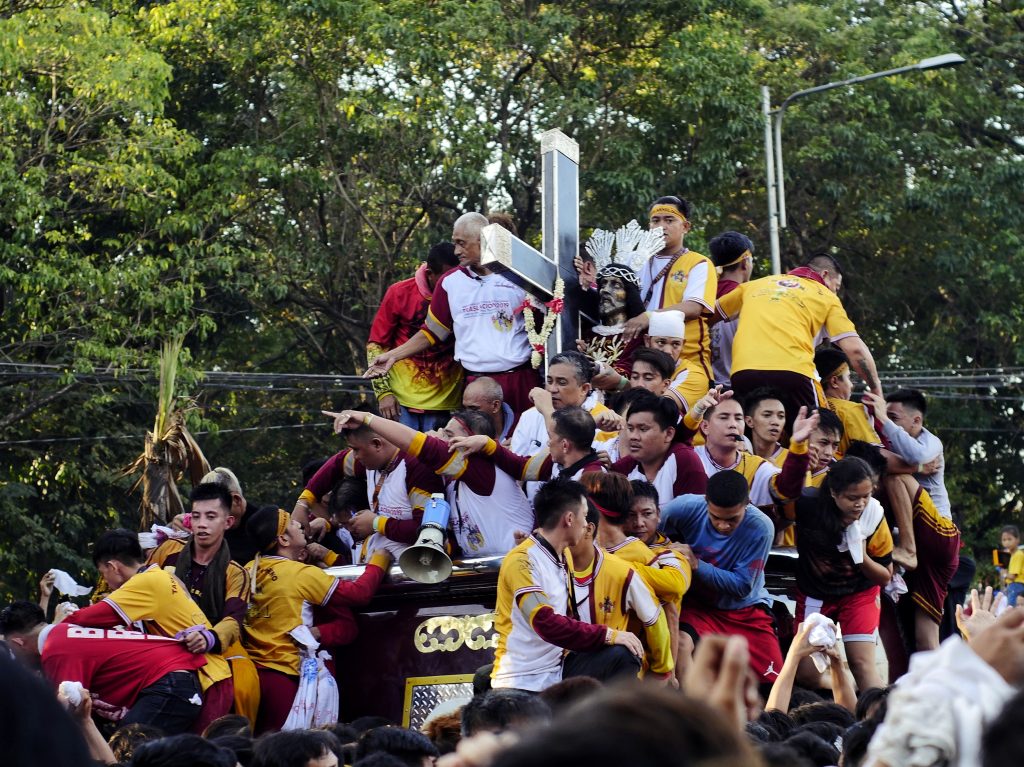Black Nazarene Festival
Black Nazarene is just one of many Festivals or Religious Celebrations that the Philippines comes to a stop for! Whether you live in the Philippines or are visiting as a tourist, you really should attend at least one festival or parade.
The Philippines is considered the largest Catholic country in Asia Pacific Region. If there is one celebration that really shows this, it is the Feast of the Black Nazarene. This takes place on the 9th January every year.
Black Nazarene
There are only a few religious celebrations in the world which can match the Black Nazarene Procession, in terms of the numbers or fervor of the devotees.

Filipino Catholics consider the Nazarene statue to be miraculous. It is said to be able to heal terminal cancer and other sicknesses, to grant petitions, and to help those in need. The fervor created by devotees trying to touch or accompany the Black Nazarene, during the procession, has sometimes resulted in serious injuries.

Attendance has grown so much, in the last 20 years. Anywhere between 9-10 million devotees can attend the procession. The procession route has already had to be extended to accommodate increasing numbers of devotees. The procession covers a 6.5km route from Rizal (Luneta) Park to the Minor Basilica in Quiapo. And it can take anywhere from 18 to 22 hours from start to finish.
It is not unusual for alerts to go out reminding people that there will be travel disruptions throughout Manila on the 9th January.
The Black Nazarene procession is covered live on television, and the movement through the streets creates a religious frenzy unmatched by any other religious event in the country.
Risk of Injury during Black Nazarene
During the 2020 Black Nazarene procession The Philippine Red Cross assisted 1,051 devotees. 679 devotees were given blood pressure consultations. First aid was provided to 291 people suffering from dizziness, shortness of breath, elevated blood pressure, abrasion, laceration, and sprains. The Philippine Red Cross also reported treating 26 patients on-site, with minor injuries. 14 patients were also transported to the Ospital ng Maynila and the Jose Reyes Memorial Medical Center with hypertension, fractures, dislocations, fainting, and loss of consciousness.
Historical background
An image of the Black Nazarene, carved of mesquite wood by an anonymous Mexican sculptor, arrived in Manila in the mid 1600s. The statue was partially destroyed in 1945, during World War II and the liberation of Manila.
The Archdiocese of Manila commissioned a renowned Filipino ‘santero’, or saint carver, Gener Manlaqui, to sculpt the present day replica, using the original head.
The current-day procession reenacts a seemingly minor historical event; the 1787 solemn Translacion, or transfer, of the statue from its original home, where Rizal Park is now located, to its present home at the Basilica in Quiapo.
The Black Nazarene image is brought out of the shrine, for public veneration, two other times in the year. On New Year’s Day, it is brought out to begin a novena that leads up to the January 9 feast. And on Good Friday, the day most typically associated with Jesus carrying the cross.

The Black Nazarene Vigil
Participants gather in Rizal Park for a vigil ahead of the procession. The vigil is filled with singing, dancing, and stage plays.
Devotees line up at the grandstand for the pahalik, or “kiss”. This is an opportunity to kiss, or touch, the cross or foot of the Black Nazarene. Often people wipe the cross or foot with a cloth that they keep and rub on themselves, or give to relatives unable to visit the Nazarene. The touch of the cloth is believed to bring about physical healing.
Inspirational talks by clergy and bishops encourage impious or wayward people, especially the youth, to turn away from bad habits or vices. Bad habits or vices, such as smoking, drugs, drinking, and pre-marital sex. The youth are instead encouraged to engage in apostolic-religious work like studying, preaching or teaching the gospel, and feeding the homeless.
Groups or families may bring their own Nazarene statues. Some families bring other religious statues, which are also treated with great respect.
The Translacion
After a morning Mass the Translacion procession of the Black Nazarene begins. The Black Nazarene is moved from the grandstand to a special carriage to begin the long, slow procession, which is anything but somber.
The most determined devotees walk the 6.5 km route barefoot from Rizal to the Quiapo Minor Basilica as penance, and an emulation of Jesus on his way to Golgotha. The act of walking barefoot is a ‘panata’ or vow of sacrifice and thanksgiving, to mimic Christ who carried the cross to Calvary barefoot.
Traditionally only men are allowed to be ‘namamasan’; the barefoot men who pull the wheeled carriage using two large ropes. Recently, though, women have also been allowed to pull the rope. The right side of the rope or the right shoulder was traditionally believed to be the most sacred side since it was the side on which Jesus bore the Cross.
Hijos del Nazareno, Sons of the Nazarene, clad in yellow or white shirts, form an honor guard for the Black Nazarene and serve as marshals. They are the only ones allowed to ride on the carriage for the duration of the Translacion. They help devotees to climb up on the carriage to touch the Nazarene or the cross, and they wipe the image with towels and handkerchiefs tossed at them by devotees. Wiping cloth on the statue is believed to ‘capture’ the miraculous power and curative abilities of the statue.

Though Filipinos can, and do, visit the statue all year long, the Black Nazarene procession is a huge event and should be experienced at least once, although maybe from the safety of a high-rise window, looking down on it!
Check out our Visayan Festivals article, which covers Kalibo’s Ati-Atihan Festival, Cebu’s Sinulog Festival and Iloilo’s Dinagyang Festival





GIPHY App Key not set. Please check settings